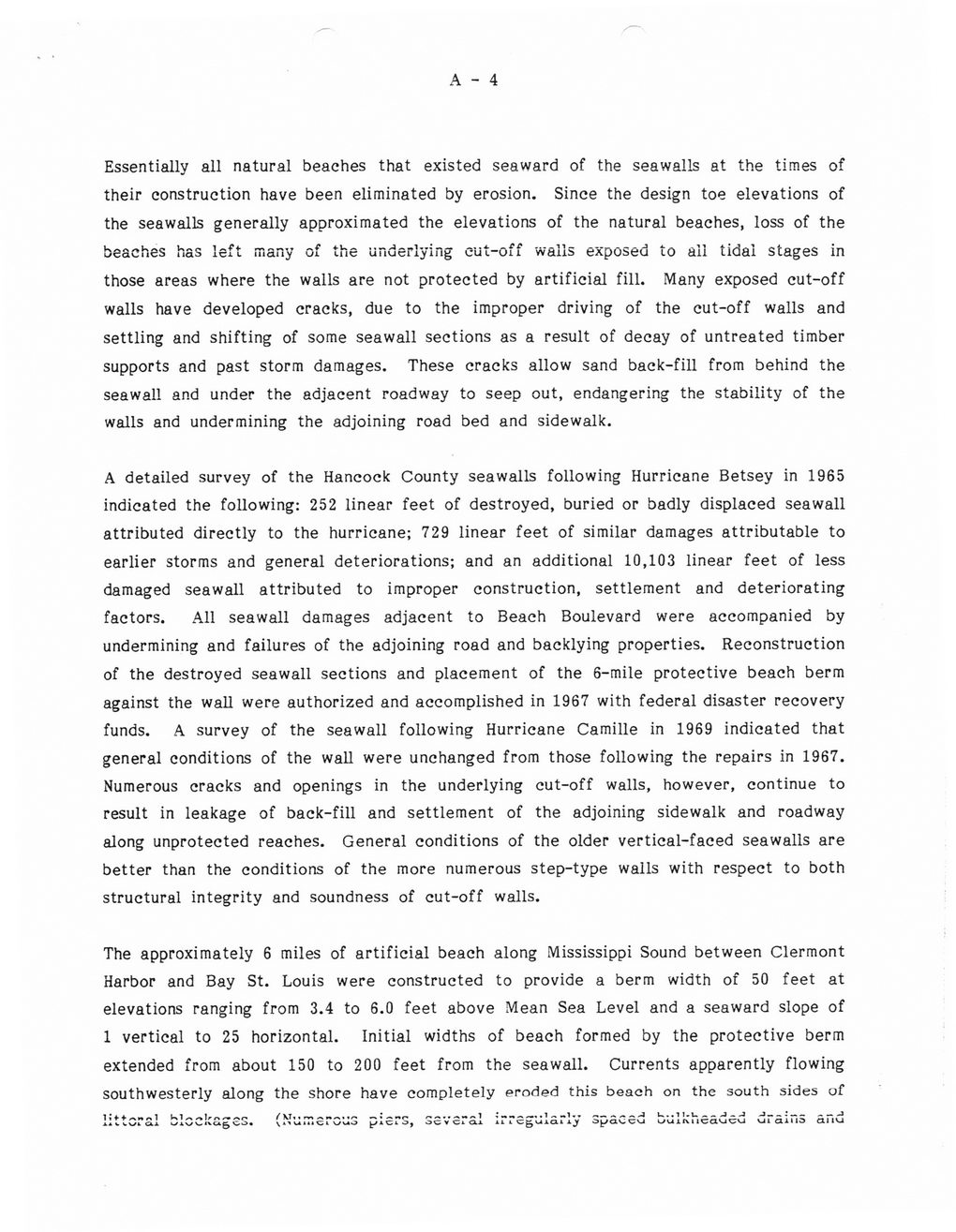This text was obtained via automated optical character recognition.
It has not been edited and may therefore contain several errors.
A - 4 Essentially all natural beaches that existed seaward of the seawalls at the times of their construction have been eliminated by erosion. Since the design toe elevations of the seawalls generally approximated the elevations of the natural beaches, loss of the beaches has left many of the underlying cut-off walls exposed to all tidal stages in those areas where the walls are not protected by artificial fill. Many exposed cut-off walls have developed cracks, due to the improper driving of the cut-off walls and settling and shifting of some seawall sections as a result of decay of untreated timber supports and past storm damages. These cracks allow sand back-fill from behind the seawall and under the adjacent roadway to seep out, endangering the stability of the walls and undermining the adjoining road bed and sidewalk. A detailed survey of the Hancock County seawalls following Hurricane Betsey in 1965 indicated the following: 252 linear feet of destroyed, buried or badly displaced seawall attributed directly to the hurricane; 729 linear feet of similar damages attributable to earlier storms and general deteriorations; and an additional 10,103 linear feet of less damaged seawall attributed to improper construction, settlement and deteriorating factors. All seawall damages adjacent to Beach Boulevard were accompanied by undermining and failures of the adjoining road and backlying properties. Reconstruction of the destroyed seawall sections and placement of the 6-mile protective beach berm against the wall were authorized and accomplished in 1967 with federal disaster recovery funds. A survey of the seawall following Hurricane Camille in 1969 indicated that general conditions of the wall were unchanged from those following the repairs in 1967. Numerous cracks and openings in the underlying cut-off walls, however, continue to result in leakage of back-fill and settlement of the adjoining sidewalk and roadway along unprotected reaches. General conditions of the older vertical-faced seawalls are better than the conditions of the more numerous step-type walls with respect to both structural integrity and soundness of cut-off walls. The approximately 6 miles of artificial beach along Mississippi Sound between Clermont Harbor and Bay St. Louis were constructed to provide a berm width of 50 feet at elevations ranging from 3.4 to 6.0 feet above Mean Sea Level and a seaward slope of 1 vertical to 25 horizontal. Initial widths of beach formed by the protective berm extended from about 150 to 200 feet from the seawall. Currents apparently flowing southwesterly along the shore have completely eroded this beach on the south sides of lif + sxnrtl /•»<- ( K7i . m ~ .r. I r-. ~ 1 i «. « . 1 ~ -1 t * -U..1I.1-------J _ J -J----3 ai pxd o, ocvci.a.j. n i cguiai ijf cu Lsuiix.iicci'ucvj ui aiU3 ttitvj

Beach History History-of-Beach-and-Seawall-Construction-(5)